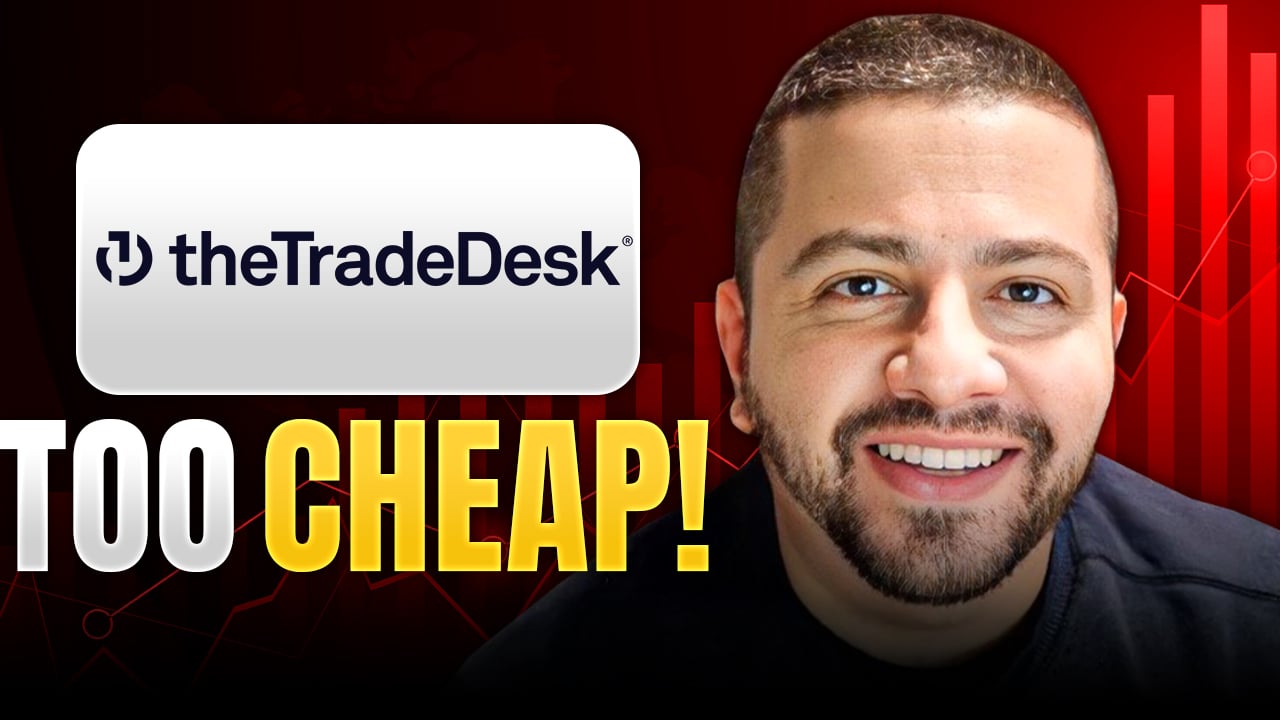The Trade Desk (TTD +0.36%) shares were slammed on Wednesday after Netflix (NFLX +0.25%) said advertisers will be able to buy Netflix ads programmatically through Amazon's (AMZN +1.63%) demand-side platform (DSP) later this year -- just on time for the holidays. For the independent ad-tech leader, whose software helps brands and agencies buy digital ads across the open internet, this is not immaterial. It puts a deep-pocketed platform directly alongside The Trade Desk on a marquee streaming service.
Ultimately, The Trade Desk's premium valuation is becoming increasingly difficult to defend. In fact, I'd argue that the stock's drop on Wednesday's news was justified -- despite shares already tanking this year leading up to this report.

Image source: Getty Images.
Recent results were strong (but slowing)
The Trade Desk's business remains healthy. In the second quarter of 2025, revenue rose 19% year over year to $694 million, and management generated about $271 million of adjusted earnings before interest, taxes, depreciation, and amortization (EBITDA), roughly a 39% margin. Video, led by connected TV, was nearly half of spend.
"CTV continues to be our fastest-growing channel with no signs of slowing down," The Trade Desk CEO Jeff Green said in the company's second-quarter earnings call.
That said, growth is decelerating. First-quarter revenue increased 25% to $616 million, and for full-year 2024, revenue grew 26%. For the third quarter, management guided to at least $717 million of revenue, implying 14% year-over-year growth (approximately 18% excluding last year's U.S. political spend). This is still solid -- but it is slower than the first half and last year.
Profitability and cash generation remain strengths, and the company ended the June quarter with about $1.7 billion in cash and short-term investments. But investors are weighing those positives against mounting competitive risks in The Trade Desk's most important growth area.

NASDAQ: TTD
Key Data Points
Amazon's entry on Netflix raises pricing and market share risks
Netflix's announcement matters because it broadens an already expanding programmatic roster. Following partnerships with Microsoft, The Trade Desk, and Alphabet's Google DV360, Netflix has since added Yahoo's DSP and now Amazon Ads -- with availability in 12 countries beginning in the fourth quarter of 2025. This makes it easier for large buyers already using Amazon's tools to route Netflix budgets without touching The Trade Desk.
The strategic risk is pricing power and market share losses. As Green put it during the company's second-quarter earnings call, big tech "walled garden" platforms can make their buying tools "seem really cheap ... because they make up that cost ... on the other side of the transaction, because they own the media."
If Amazon chooses to subsidize its DSP fees to win Netflix budgets -- and then monetize on Prime Video or elsewhere -- that could pressure The Trade Desk's take rate and share of wallet over time.
None of this breaks the long-term story (but it does hurt it). The Trade Desk remains the leading independent DSP on the open internet, with customer retention above 95% for years and a product roadmap -- Kokai, OpenPath, and identity solutions -- aimed squarely at improving outcomes and transparency for advertisers across publishers. But the risk-reward at today's price looks less favorable. The stock trades around at a price-to-earnings multiple in the high 50s -- a premium that assumes sustained share gains and robust CTV growth without meaningful margin or pricing pressure from larger platforms. With growth cooling from 25% in the first quarter to 19% in the second -- and guidance pointing to the mid-teens next -- investors are right to ask for a wider margin of safety.
If management can prove that Netflix budgets continue to flow efficiently through its platform, hold pricing as rivals crowd the channel, and reaccelerate growth in 2026 as suggested on recent calls, sentiment could improve. Until then, a price-to-earnings ratio in the 30s would better reflect the real competitive and execution risks around connected TV. The business is excellent; the stock needs to better fit the risk.









